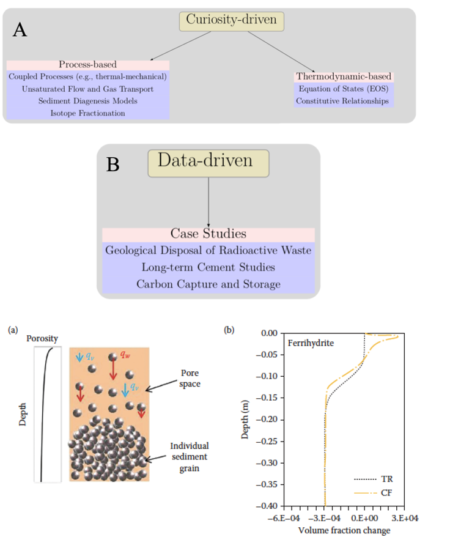
Top: Benchmarking activities can be defined based on how they are used – (A) to identify needs for further Improvement; (B) for standardized references.
Bottom: Differences in compaction schemes for two reactive transport models ToughReact and CrunchFlow.
Scientific Achievement
We present a comprehensive mathematical description of multi-component, multi-phase, flow and reactive transport processes at the continuum-scale as well as various constitutive relationships to parameterize the heterogeneous subsurface system under variably saturated conditions.
Significance and Impact
There is a growing need to benchmark reactive transport codes. The geosciences community has made significant efforts to benchmark reactive transport codes. A summary of such efforts is presented here.
Research Details
- Provided a description of governing equations, numerical schemes including coupling and solution approaches
- Included a thorough literature review on the benchmarking needs for developing standardized references, codes, models, conceptual model comparisons, performance and reliability
- Described benchmarking activities initiated within the last several years by the geosciences community, including the SSBench initiative
Citation
Dwivedi, D., B. Arora, S. Molins, and C.I. Steefel (2016). Benchmarking reactive transport codes for subsurface environmental problems. In Groundwater Assessment, Modeling, and Management, ed. D. Thangarajan and V.P. Singh, 299–316. Boca Raton, Florida: McGraw-Hill.
